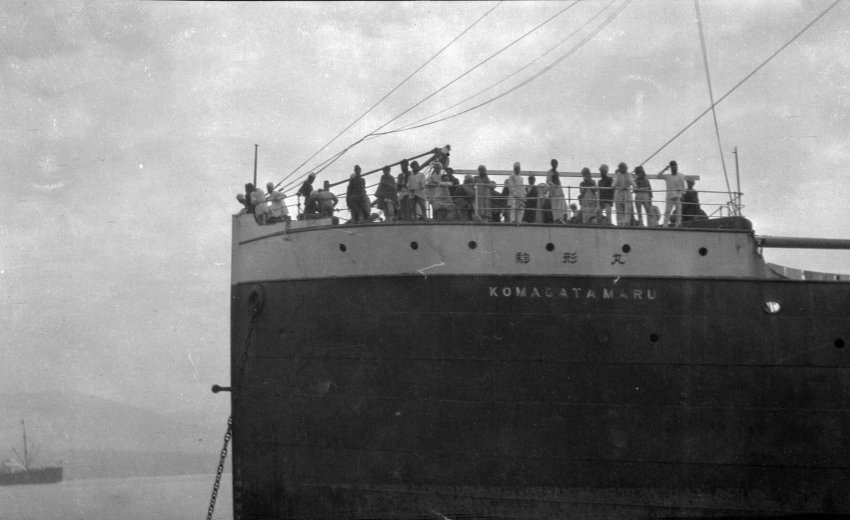In 2008, the British Columbia government planned to propose a motion in the legislature to apologise for the Komagata Maru event. This initiative was timed to coincide with the anniversary of the ship's arrival at Vancouver Harbour on May 23, 1914.
House Leader Michael De Jong stated that the motion aimed to acknowledge the suffering endured by the passengers of the Komagata Maru due to the prevailing racist attitudes towards people from India at that time. Attorney General and Minister Responsible for Multiculturalism, Wally Oppal, expressed deep regret that the passengers were turned away.
After reaching India, the passengers were detained, with the British authorities planning to send them to Punjab. However, when the passengers protested, 22 of them were tragically killed. It took Canadian officials two months to decide that only 24 out of the 376 passengers, who were predominantly Sikh, would be allowed to remain in Canada. Throughout this period, the passengers faced challenges such as food shortages and disease due to the cramped conditions aboard the Japanese steamship.
Komagata Maru: In detail
In April 1914, a group of individuals from British India embarked on the Japanese steamship named Komagata Maru to immigrate to Canada. However, the majority of them were denied entry and compelled to return to Budge Budge,a town in Kolkata. The Indian Imperial Police attempted to apprehend the leaders of the group upon their arrival, leading to a violent clash where the police fired upon the individuals, resulting in the tragic deaths of 22 people.
Komagata Maru set sail from British Hong Kong, making stops in Shanghai, China, and Yokohama, Japan, before reaching its final destination in Vancouver, British Columbia, Canada. The ship carried a total of 376 passengers from the Punjab province in British India, consisting of 337 Sikhs, 27 Muslims, and 12 Hindus. All of them were Punjabis and British subjects. Out of these passengers, only 24 were granted permission to enter Canada, while the remaining 352 were denied disembarkation and compelled to leave Canadian waters. During this journey, the ship was accompanied by HMCS Rainbow, one of Canada's initial two naval vessels. This incident was one of several occurrences during the early 20th century where exclusion laws in Canada and the United States were used to prevent immigrants of Asian descent from entering the country.
Gurdit Singh: The man behind the Komagata Maru initiative
Gurdit Singh Sandhu, a Singaporean businessman from Sarhali, had knowledge of the Canadian exclusion laws that were preventing Punjabi immigrants from entering Canada. In an attempt to bypass these restrictive laws, he came up with a plan to charter a ship from Calcutta to Vancouver. His goal was to assist his fellow countrymen who had faced numerous obstacles in their attempts to immigrate to Canada.
Despite being aware of the regulations, Gurdit Singh proceeded with his venture by chartering the ship called Komagata Maru in January 1914. He did so with the intention of challenging the "continuous journey" regulation and hoped that his actions would lead to the opening of doors for immigration from India to Canada.
When the Komagata Maru eventually docked at Budge Budge around September 1914, the police went to arrest Baba Gurdit Singh, whom they saw as one of the leaders. However, Singh resisted arrest, and a friend of his assaulted a policeman, leading to a general riot. He was able to evade capture and lived in hiding until 1922. Mahatma Gandhi, a prominent leader in the Indian independence movement, urged him to surrender, considering him a "true patriot." Upon surrendering, Singh was imprisoned for five years.
Apology delivered with loud Jaikara
In Victoria City, Canada's British Columbia provincial assembly formally apologised for the Komagata Maru disaster in 2008. On the 94th anniversary of the ship's arrival at Vancouver's harbour with 376 people on board, the assembly unanimously voted to apologize.
The Komagata Maru event is significant in Canadian history as it reflects a discriminatory immigration policy that favoured white immigrants. The government has officially acknowledged the passengers' bigotry and apologised for their pain.
Homage in India
In 1952, the Indian government established a memorial in Budge Budge to honour the Komagata Maru martyrs. The inauguration was done by Jawaharlal Nehru, the Prime Minister of India. The memorial, locally known as the Punjabi Monument, is designed to resemble a kirpan (dagger) reaching towards the sky.
A three-way agreement was signed between the Kolkata Port Trust, the Union Ministry of Culture, and the Komagata Maru Trust for the construction of a two-storey building adjacent to the existing memorial. The building will include an administrative office and library on the ground floor, a museum on the first floor, and an auditorium on the second floor. The construction is estimated to cost 24 million Indian rupees (INR).
To commemorate the 100th anniversary of the Komagata Maru incident, the Government of India released two special coins in 2014: a 5 Indian rupee coin and a 100 Indian rupee coin.
Honouring the deceased in Canada
A plaque was placed in the Sikh gurdwara (temple) in Vancouver on July 23, 1989, to honour the 75th anniversary of the departure of Komagata Maru. Additionally, another plaque marking the same anniversary can be found in Portal Park, located at 1099 West Hastings Street, Vancouver. In 1994, a plaque was installed in Vancouver Harbour to commemorate the 80th anniversary of the arrival of Komagata Maru.
On July 23, 2012, a monument was unveiled near the steps of the seawall leading up to the Vancouver Convention Centre West Building in Coal Harbour. This monument serves as a remembrance of the Komagata Maru incident. Canada Post released a stamp on May 1, 2014, to commemorate the 100th anniversary of the arrival of Komagata Maru. Furthermore, the first phase of the Komagata Maru Museum was opened in June 2012 at the Khalsa Diwan Society Vancouver Ross Street Temple.
The Komagata Maru incident holds significant importance in Indian history, particularly for the Sikh community due to the large number of Sikhs onboard the ship. This incident sparked outrage and became a symbol of racial discrimination and the denial of basic human rights. It serves as a painful reminder of the challenges faced by immigrant communities and continues to be remembered as a symbol of Sikh resistance against injustice.

